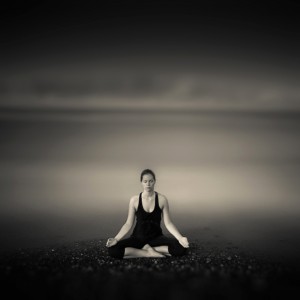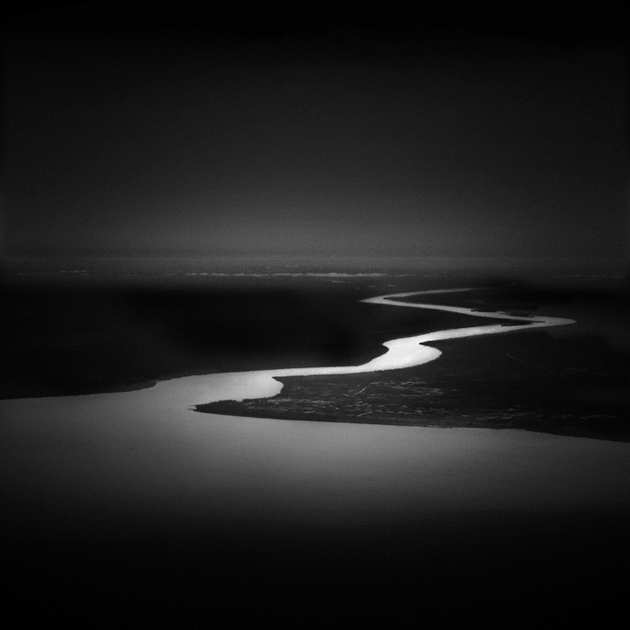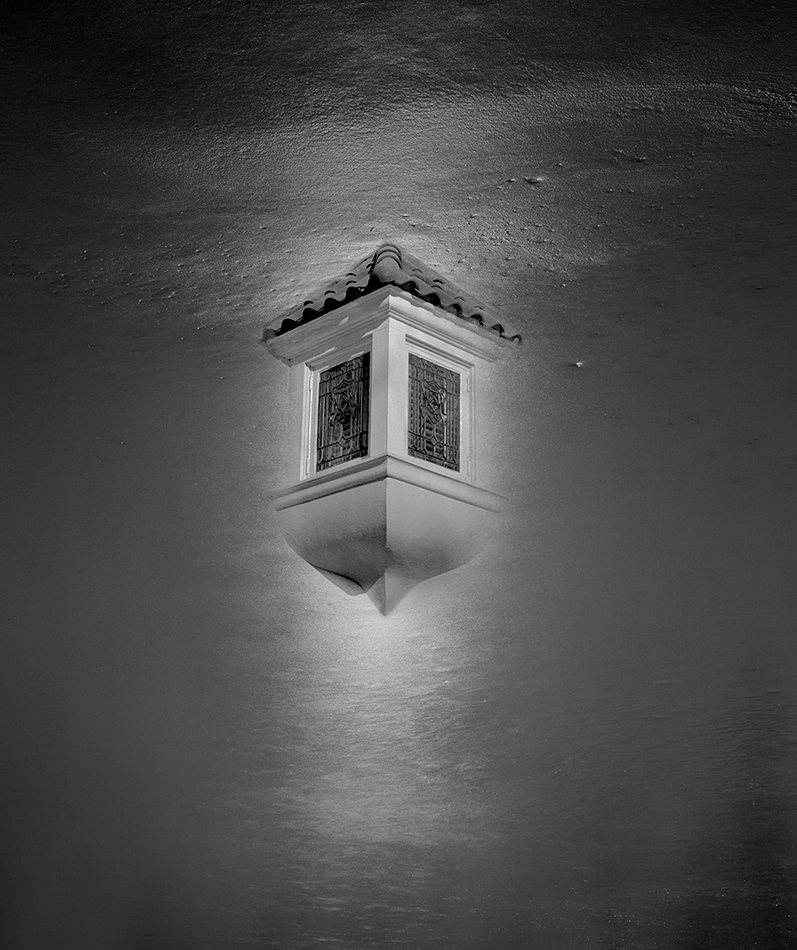Who Am I?
Know Thyself.” Socrates words resound with an inner force as clear and direct as their first utterance over twenty-five centuries ago. These two simple words lie at the heart of the world’s great teachings and have had a profound impact on the thought and inquiry of western civilization. What do these powerful words really mean? How do we approach this vast and essential task? And for our purposes: does an active engagement with the creative process assist in this endeavor?The only reliable means of approaching these questions lies within the realm of attention, the mysterious property that liberates our distinctive human birthright—the potential for self-consciousness. The human condition holds the possibility for a consciousness that can become aware of itself and its manifestations. Yet we stand only on the threshold of this possibility. Through the very imperative of his words, Socrates acknowledges the longing and the need to open oneself to the inner quest. Implied in his statement is one simple fact: that self-knowledge requires an active effort. We must strive toward a comprehensive self-awareness without making the assumption it is a trait that we already embody. There are levels, degrees of self-consciousness, and it is a lifelong effort to penetrate the veils that hide us from ourselves.
The creative process provides rich material to assist in our search for self. As artists, we are fortunate to have a medium that can invoke and reveal the shape of who we are. However, not wanting to diminish the manifold dimensions of art, I also acknowledge its power to reflect upon political, social, and environmental realities. Common sense dictates that the gradual realization of self takes place concurrent with the discovery of the world around us. It is a reciprocal, relational process. But very often, especially in the early stages of working with an art medium, we are drawn toward self-awareness and asked to employ the richness of creative work in the service of our growing search for self-knowledge.
Photography and art have taught me a great deal about the nature of my own vision and that of my students. Images can reflect back how we see the world, where we are in our own development, and can offer hints of one’s own individual place of genius, what is deeply our own. I believe in the sanctity of individual experience and the implicit order of an authentic self, which can subordinate our personalities around a guiding principle: the search to become who we are. I’ve made a lifetime commitment to assisting students uncover how they see. I help them rummage around in all the stuff found within their organism, and encourage them to look with discrimination and a sharply focused intent—opening the dark closets, attics and basements to find the gold of truth within.
Lurking just beneath the surface of their interests, drives, and compulsions, lay a unique, highly authentic vision. They don’t know it. They can’t see it. Like most of us, they’ve never had the opportunity to know who they are on such a deep, essential level — and to have it mirrored back to them in the shape of images and classroom response. The unconscious, or what I would call the “depth mind,” is unknown to most of us. Unlike the rational, linear, verbal surface brain, the depth mind speaks in symbols, metaphors, and images—and is the seat of understanding and wisdom. Knowledge belongs to the rational brain while intuition is allied with the unconscious and emerges through the cracks of the surface mind and blooms into consciousness. Creative activity can widen these “cracks” in the mind into fissures of awareness between the conscious and unconscious material of thought. Self-knowledge implies an integration of the highly personal contents of the mind as well as an understanding of the collective nature of intelligence. Like an electronic web of pulsing, wordless insight, our minds are connected on a deep level by virtue of our shared humanity.
Discovering ourselves begins with self-observation but eventually, of necessity, expands outward to the world itself. Hindu scholar Ravi Ravindra writes in his excellent commentary on the Yoga Sutras that self-knowledge begins with our own individual conditions but inevitably leads to a recognition of our shared human condition. “Self-study may begin as a study of very personal and quite particular likes and dislikes, but very soon we discover that self-study is in fact a study of the human condition as it is expressed in our individual situations.”
Who am I? Why am I here? What is my own: my path, my calling, my role—what am I to be? These questions often lie at the core of our early efforts with a creative medium. And no matter what direction our mature work assumes, these questions continue to have importance and bear resonant meaning over the course of our entire lives. It is through the state of being in question that discovery and growth arises. As soon as we assume that we know, something in us is lost and dies, shrivels up into a shell of inert impenetrability and loses its living quality. To question is life itself. Remember Rilke’s words of guidance in Letters to a Young Poet, “Try to love the questions themselves.”
Through the creative process, we remain in question. An active involvement with an art or craft serves to remind us that we are incomplete, that we are engaged in the process of our own creation and searching for the truth of ourselves.
On a New Year’s Eve—over forty years ago—I gathered with some of my peers at the home of our photography teacher, Nicholas Hlobeczy. Young and eager, we embarked on an evening of looking at photographs, listening to music, and sharing vital conversation. A holiday spirit prevailed, lubricated with wine and fueled by our deep longing for creative expression. We each showed our newest work, our youthful most-polished efforts, waiting, wishing, hoping for positive response from Nicholas. I remember being nervous about what I was showing and felt inwardly that something was amiss. Even then, an inner measure existed that could sense but not fully identify the features of a subtle imbalance. It was as if I was knowingly and happily living a lie. Some part of me did not want to be found out, even by myself—especially by myself. But mostly, I consented to this false pretense since I had no idea where the vague sense of deception was to be found.
As we each showed our images that had been made with care and as much technical expertise as we could muster—work that emulated the great photographs of the day—Nicholas was visibly unmoved and quiet. We, on the other hand, applauded each other’s efforts. We drank more wine in celebration of each other’s remarkable abilities—and at such a young age, we thought, to be making such interesting images.
Nicholas finally started leafing through the prints and proofs scattered throughout the room, shown in relief against the dark oriental rug. He had this annoying habit of not being suitably impressed with us, simply saying “huuum” again and again. Recognition gradually dawned in him as we observed a growing clarity and sparkle in his eyes.
He gathered up all of our finished prints and casually placed them in a pile beyond the reach of our eyes. Several small proofs and stray images, tangential to our serious efforts, remained in the center of the room. “Little pictures,” he said, with no explanation or introduction. “Little pictures,” he repeated with force and emphasis as he picked them up, one by one, holding them where we could all see and observe them carefully.
He eventually continued with his response: “Pictures from essence, of child-like perceptions, real pictures of who you really are.” It was true. The small pile of “little” pictures were real. They were an accurate reflection and struck a note of truth. They were not about ambition or polish or future greatness. They were about reality, a genuine portrayal of the present, and they reflected our authentic selves. As a result, they were unimpeachable—and remarkable—in precisely the way that we wished and hoped that our other images might become. This experience gave us something to aim toward.
One set of images—the “little pictures” grew directly from our essence. The other set of images were full of the strivings of our ego to be good, to be admired, to be like the masters, and to be applauded. In a moment we saw and deeply appreciated the difference. For the very first time, I caught a glimpse of my youthful, bombastic ego and its desire to be liked and recognized. And, with clarity, I saw something of my true nature. It was a small glimpse, to be sure, but it rang of integrity and not false pretense. We were, on the one hand, embarrassed by our ego’s antics, and on the other hand, extremely grateful for this important discovery, this moment of understanding that Nicholas revealed.
Nicholas continued: Can we make “little pictures?” Can we practice non-doing and simply allow our images to find us? Can we bring to light what is really our own—in truth, he said, not in imagination?
Turns out, we stayed up all night on that New Year’s Eve and ventured out to make photographs at dawn, with the singular intent of being open to the images that may find us. I made a picture of a floating window on a Spanish-style house that was later double-printed, combined with a negative of light reflections on ice. It came as a revelation, the strength of my connection to the image. It honestly felt like my own—one of the first decisive moments to find its way through my camera aligned with my heart and mind. When I drove home later that day, I felt that something had changed in me, a significant inner measure had been uncovered for the very first time—an experience that has never left me.
I have come to understand that authenticity is not a permanent state; rather, it is a direction—something to aim towards. Our conditioning is very strong; our egos are inwardly dictatorial, wanting to be liked and admired. Our self-image often goes to extremes, towards either congratulatory inner adulation or to scathing self-recrimination.
Our essence, what is real in us, speaks in whispers. It is often hidden beneath well-constructed personalities. We are a mixture of essence and personality. Yet, we see certain ways of being, certain interests, certain ways of expressing ourselves, certain ways of interacting with the world and others, that we can call our own. These inner conditions have a different ring. They are resonant. They sound true. They feel more right. We need to be vigilant and attentive, waiting, watching, for the appearance of ourselves. Often our greatest challenges and greatest strengths reside together in this vibrating region of authenticity.
One distinguishing feature of this period of time surrounding that New Year’s eve: I was sitting quietly, meditating on a daily basis, and making an active effort to maintain an awareness of myself during parts of the day. My wish to awaken was great. I tried to stay within my body, receive the silence—and listen within. This effort of attention felt like a “knocking on heaven’s door,” opening to a source of wisdom lying just beyond the threshold of my consciousness, that seemed to waiting, wishing to reveal itself to me. This wisdom, this knowledge, I suspect, is always there—it is we that are absent most of the time.
Tibetan Buddhist monk, author, and prolific photographer Matthieu Ricard illuminates the true nature of inspiration and intuition. “Sometimes with nature or with art, you experience greater insight, a real moment of enlightenment, or a luminosity that connects you with the world or nature or others. By understanding the nature of your own mind, you naturally come to what we call intuition and insight. These moments come from your practice, from developing loving kindness and compassion, and they are moments of what I would all genuine wisdom. Consciousness is an experience. It goes deeper and deeper into the experience, behind mental constructs and behind the veil of your emerging tendencies. You come to your natural wisdom. So intuition or inspiration is really the experience of your own wisdom. It is like seeing a small patch of blue sky amidst the clouds—and you try to widen that patch through personal transformation.”



